Not sure how to best tackle this Canberra blog, but I think I will do it day by day. There was so much to see and do and as Peter said "Canberra really was information overload" But we did really enjoy our visit to the ACT. The whole week was extremely interesting and stimulating. We learnt heaps. No doubt some was covered during our schooling, but you only retain what you want to! We stayed at the Capital Country Holiday Park at Sutton, which is actually in NSW, so we had about 17 kms to travel to Canberra. Which turned out to be each day as we did go into the capital everyday.
20th MarchDay 1 - Parliament House. What a magnificent building this is. The whole planning of the 'Parliament Zone' and how it all forms the triangle is quite something. We didn't realise this until we did the morning tea cruise on Day 4. More of that later. Back to Parliament House. I'll say it a second time! What a magnificent building! We did a tour at 3.00pm, but before that we sat in on the Senate. I think there were about 14 Senators in there. 14 out of 76, it seems hard to believe that only that many would be there. They were debating the Bill that would provide home assistance to the Rural Families Experiencing Drought. The assistance was only a couple of thousand dollars, but at least it was something. The Independents spoke against it as they believed more could be done, but they didn't say what! If you think this, come up with suggestions. Don't just knock it! Anyway it was voted on and the 'I's Got It' as they say! By then it was time to go into 'Question Time' in the House of Representatives. Val had booked the four of us in when she went to the Information Centre the day before. You do have to pre-book to go into Question Time. Handbags etc have to be left with security in the cloak area. Lots of reference to WA during Question Time. Much of the debate or information reported was either from a member from WA or relevant to WA! Probably because WA would be voting again in a couple of weeks (5th April) for the twelve senate representatives. We have organised our postal voting. The carbon tax issue was the hot potato and they were giving our dear Alanah heaps! I wasn't impressed with the leader of the opposition Bill Shorten. All he did the whole hour we were in there, was put the same question to the Prime Minister Tony Abbott. All he did was change a word or two! It was all about whether he had prior knowledge of the problem, pertaining to Assistant Treasurer Arthur Sinodinos stepping aside from the frontbench. This came about because of political pressure over business dealings that are before a NSW anti-corruption inquiry. Three of the Labour members were ordered to leave the House by Speaker Bronwyn Bishop, because they continued to demand that she do whatever, because of Clause whatever, under Section whatever, in the whatever!! Talk about a circus and at times you had to wonder whether they were putting on a show because they had an audience! We left at 3.00pm because we wanted to do the tour of Parliament House. It was a pretty quick tour and then we went up onto the roof for magnificent views over the city. The flag that flys above the roof is said to be the size of a double decker bus. The guide imparted this info to us and pamphlets say that as well. On the morning tea cruise though, Jim actually gave us the size. He said it is a lot bigger and I have found on the web that the flag flown from the 81 metre flagpole is 12.8 m by 6.4 m, which is about the size of half a tennis court! That is a pretty BIG Flag! The marble columns in the foyer of the building are really lovely. There are 48 marble-clad columns and two superbly crafted marble staircases. Designed to be reminiscent of a eucalyptus forest. The Foyer is a show piece for the beautiful masonry and timber used throughout the building. It was designed by the American architectural firm Mitchell Giurgola and Thorp as a result of an international design competition. Parliament House was opened on 9th May 1988 and is regarded as one of Australia's most acclaimed buildings and it is the meeting place of our nation. When we had finished our tour and look over this magnificent building, that I think cost something like $3 billion, I got Peter to take a photo of me on the lawns. I still feel very humble when I think of Yuna CWA branch nominating me in 2001 for the Federation 'Peoplescape' Project. They did a really special 'Peoplescape Figure' on the voluntary service I have given to CWA and the Yuna community. 1,000's of 'Peoplscape Profiles' were placed on the lawns of Parliament House commemorating 100 years of Federation for Australia. Day 2 - Goulburn and The Museum of Australian Democray - Old Parliament HouseOn this day we went to Goulburn and sorted what we needed to do there regarding our Drivers Licences and changing the Pin Number on our Rabobank cards. Done! Application forms, signed photos etc are in the post. Fingers and toes crossed that everything will be right this time! Whilst in Goulburn we visited another of the '50 of Australia's Craziest Roadside Attractions'. This one was the 'Big Merino' and he was BIG. 15.2 metres tall, 18 metres long and he weighs 97 tonnes. It is built of glass reinforced cement over a frame of mild steel rod. It was not always where it is now and it was moved down Hume Street in 2007, due to the building of a new Goulburn bi-pass road. It was moved 800 metres and some of the sections had to re-sculptured. His nickname is Rambo. He is only given 7 out of 10 on the 'Iconmetre', but I reckon he is worth more than that! Goulburn was the first inland city and has a population of approximately 24,000. There are lots of old buildings in Goulburn as you would imagine, and we were particularly impressed with the historic town. Museum of Australian Democracy: We were back at the park by 1.30pm, so we had time to do the tour of Old Parliament House at 2.45pm. We were glad we did that tour the day after doing Parliament House. There were less people in the tour than the day before and our lady volunteer guide was excellent. There was plenty of time to go back and look through the rooms after the tour. It is such a lovely old building. It is said to be one of Australia's most-loved buildings and it is now 'The Museum of Australian Democracy'.Info from the web: Parliament House was the home of the Federal Parliament from 1927 to 1988. During this time, great changes took place in Australian social and political life. This is the building in which democracy matured in Australia. It was here the nation was shaped. Around the building grew the new Australian capital city of Canberra. The need for a national capital arose when the Australian colonies united to form the Commonwealth of Australia in 1901. Parliament House was like a town within the city of Canberra. It had its own library, post office, barber, carpentry workshop, bars and dining room. By the 1980s, thousands of people worked in the building including politicians, parliamentary staff, Hansard reporters, journalists, dining room and bar staff. During its life as a working parliament, this building was the setting for many of Australia’s major political events. Debates that influenced the future of the nation took place here, key decisions were taken, political careers were made and ended.
While the building is important because of the events which occurred here, it is also significant in terms of architectural values. The House was designed by John Smith Murdoch, the first Commonwealth Government architect. He was asked to design a 'provisional’ building that would serve as a parliament for fifty years. Murdoch worked with the ‘stripped classical’ style, common in government buildings in the 1920s and 1930s. Murdoch also designed the East and West Blocks, which are the original government office buildings in Canberra. Murdoch’s provisional parliament building was modest and functional, and was filled with natural light from windows, skylights and light wells. With its verandahs and colonnades, and strong horizontal lines, the building was not as some people expected a parliamentary building to be, and it attracted criticism from some architects at the time.
In the 61 years that the building served as 'Parliament House', there were many changes in the size and nature of the Federal Parliament. During this time the House of Representatives grew from 76 to 148 members and the Senate from 36 to 76 members. In 1927, only the Speaker of the House, the President of the Senate, the Prime Minister, the Leader of the Government in the Senate and Ministers had their own offices. By the 1980s, the building had exceeded its capacity with almost 3000 people crowded into a building originally intended for a few hundred. Members and senators had offices of their own, most of them tiny and overcrowded.
A new and permanent Parliament House was completed in 1988. In June of that year, members sat for the last time, after 61 years in the old building. Today, the building is listed on the National Heritage Register and is home to the Museum of Australian Democracy—a museum that tells the story of Australia’s democracy, including the history and heritage of the building.
In order to make every element of the building conform to Murdoch's sense of style, all the furniture and fittings, even down to wastepaper bins, were made under his artisitic control. The first sod of Parliament House was turned on 28th August 1923, with the Duke and Duchess of York officially opening the building on the 9th May 1927. The final cost of the building was 600,000 pounds, which was more than 3 times the original estimate.While in Canberra we did our own thing during the day and then got together with Kevin and Val for drinks.On Day 2Kevin and Val came down to where our caravan site was and we had drinks together in the annex.Day 3 - Royal Australian Mint and The Australian War MemorialThe first thing we did on Day 3 was find where the Railway Station was and find out about the trains to Sydney. We intended to travel by train for our weekend in Sydney on the 28th March. The Royal Australian Mint: was not far from the Station and that was our next stop. As it was Saturday we were not able to see the robot working and we were just too late for the first conducted tour. We decided not to wait around for the afternoon one. You get that! One has to accept that you can't always do all that you'd like! There is quite a big display area where you can view many exhibits and look down through big glass panels into the area where the coins are made. There was so much information on the various coins that have been produced. I found myself taking pic after pic of coins and notes, thinking I would then be able to put info to the coins I have collected over the years. It would have made more sense, and no doubt been an easier reference guide, to have purchased the book with all the coins and notes in it. Maybe I will be able to borrow Kevin & Val's purchase one day! The staircase leading up to the display area was pretty impressive. The new Australian Mint was opened on 9th September 2009 by the Governor-General of the Commonwealth of Australia, Her Excellency Ms Quentin Bryce AC. All Australian money is now printed here. Prior to the new mint, the notes were printed in Melbourne. We purchased coins for the grandchildren and we will send them to them as their Easter gift, with a little note that if they look after them they will be worth a lot more than we paid for them, in years to come. We had our picnic lunch under the trees in the park alongside. I must have left my new water bottle there. I had purchased it in Dubbo and have fallen in love with it! Damn! It took until Rosebud to find another one at Target. I can type that now as I am still trying to complete this blog! This addition is on the flight back to Adelaide. Australian War Memorial: We went here after lunch. We were so impressed! We got there just as the 1.30pm tour was starting, so we joined that. That filled up our afternoon. The tour was very informative and all we managed to complete was an overview of the Memorial, afternoon tea in the Cafe and a viewing of the 3 aircraft videos. We will be back another day.Day 4 - Cruise on Lake Burley Griffin - Lunch at the National Carillon - Wine TastingAfter having drinks again with Kevin and Val on Day 3 we decided to do a morning tea cruise on Lake Burley Griffin, the next morning. Both Val and I had picked up a brochure from the Info Centre. Peter wasn't that keen on a slow putt-putt on an electric motorised boat around a lake. It was not really his 'cup of tea'! But he went with the flow. There wouldn't be enough action for him! Cruise on Lake Burley Griffin: It turned out to be really good. Jim Paterson our skipper was a wealth of info and we were the only four on the boat. Jim had a successful career in broadcasting and television before turning to the water in 2003. He worked with boats before turning to media and now he is back with his boats again. His first boat the Cygnet was converted from a steam launch in 2003, and is now a replica Edwardian style electric launch. Cygnet was the first all electric commercial vessel on Lake Burley Griffin. The MV Gull was added to the fleet in October 2009 and converted to electric in 2012. This was the boat we cruised on. Both boats are running on green energy to provide carbon neutral transportation, a positive contribution to the environment. Jim showed us maps of the planning of the triangle for Canberra. The Land Axis and the Water Axis, and which landmark is aligned with another! In April 1911 the Australian Government held an international competition to produce a design for Canberra, its new capital city. Griffin produced a design with help from his wife. They first heard about the competition in July, while on honeymoon, and worked feverishly to prepare the plans. On May 23, 1912, Griffin's design was selected as the winner from among 137 entries. This created significant press coverage at the time and brought him professional and public recognition. Of his plan, he famously remarked: "I have planned a city that is not like any other in the world. I have planned it not in a way that I expected any government authorities in the world would accept. I have planned an ideal city – a city that meets my ideal of the city of the future."We slowly cruised down as far as the Governor General's mansion at the end of the lake. There was scaffolding along the front of it as it was getting a little 'touch up' in readiness for Will, Kate and baby George's visit in a few weeks. Jim also told us lots of info about the 'Water Jet' on Lake Burley Griffin. These days it is only operated between 2 pm and 4 pm. This is a cost saving decision as it does take a lot of power to eject the volume of water to such a height. Too much to remember but I did get these details from the web: The Captain Cook Memorial Jet was constructed on behalf of the Commonwealth Government by the National Capital Development Commission to commemorate the bicentenary of Captain James Cook's discovery of the East coast of Australia. It was officially inaugurated on 25 April 1970 by Her Majesty Queen Elizabeth II. Water is drawn from the lake through a 50-metre intake tunnel to the underground pump house. There are two 4 stage vertical spindle centrifugal pumps capable of pumping 250 litres per second against a head of 183 meters.
Each of the pumps is driven by a 560 kilowatt water-cooled 3.3 kilovolt electric motor. Operation of the jet can be carried out both remotely using programmable logic controls and also locally using switchgear. The water is then pumped through a 450mm diameter steel pipeline which extends approximately 205m from the pump house, through the tunnel and along the lake bed to the concrete nozzle housing structure. The nozzle housing is located 150 metres from the lake wall in the central basin of Lake Burley Griffin . The nozzle housing accommodates 2 discharge nozzles - a main nozzle which operates with both pumps operating simultaneously and a resulting jet of water 147m tall, plus an auxiliary nozzle which operates with a single pump operating and a resulting jet of water 110m tall. Remote controlled nozzle selector valves, located in the nozzle housing, direct the flow to either the main or auxiliary nozzle. The exit velocity of water leaving the nozzles is 260kph and the mass of water in the air at any time is 3 tonnes on single pump operation and 6 tonnes on dual pump operation. After we completed our 2 and a half hour cruise, we decided we would find a nice park to eat our lunch. Well that proved to be a little harder than we imagined. We found a nice park, but there were no table and chairs. In hindsight we should have got the picnic blanket out of the back of the car and sat on the grass, but Peter was very good and kept driving! Eventually we decided a seat on the edge of the path near the 'Carillon' (bell tower) on Aspen Island, would have to do! We could hear the music from the bells, as Jim had told us that on Sunday there is a recital.National Carillon: The carillon was a gift from the British government to the people of Australia to commemorate the 50th anniversary of the National Capital, Canberra. Queen Elizabeth II officially opened the National Carillon on 26 April 1970. The 50 metre tall National Carillon tower was designed by Western Australian architects Cameron, Chisholm Nicol. In 2004 the Carillon underwent refurbishment including renovations of interior function facilities and the addition of two extra bells. Carillons must have at least 23 bells to be considered as such, and the National Carillon now has 55. Each bell weighs between seven kilograms and six tonnes. The bells span four and a half octaves chromatically. The carillon is in regular use, chiming every quarter hour and playing a short tune on the hour, along with tours and recitals on many days. The best place to listen to the carillon is suggested to be within 100 metres of the building, though the sound can usually be heard much further away. Even in the Parliamentary Triangle. After lunch we went out west towards Yass where there are many wineries. It didn't turn out to be that successful really! None of the wine we tasted really hit the spot and we were nearly involved in an accident, when some idiot came around a corner too fast. Kevin was the only one to buy a bottle of sweet wine, at the last winery we went to.Day 5 - Australian War Memorial: Today we decided we would spend the day at the Australian War Memorial. We packed our lunch and did think we would probably be able to sit somewhere in the grounds to eat it. The weather had deteriorated and by lunch time it was quite wet. So we ended up eating our lunch in the car. There is just so much to see at the War Memorial and it certainly is a very moving place! A special World War 1 display is being prepared for the 100th anniversary in 2015, so a temporary display had been put together on WW1. Everyone should visit this magnificent monument and many school children do go to Canberra for their Year 7 or 8 camp. The Australian War Memorial combines a shrine, a world-class museum, and an extensive archive. The Memorial's purpose is to commemorate the sacrifice of those Australians who have died in war. Its mission is to assist Australians to remember, interpret and understand the Australian experience of war and its enduring impact on Australian society.We met Val and Kevin at 3.30pm as they were finishing off the War Memorial today as well. From there we went to the Railway Station to pay for our train tickets to Sydney on Friday. After that, to Majura Park for a bit of grocery shopping and then back out to Sutton. It was our turn to organise nibbles for drinks.Day 6 - Telstra Tower and National Museum and Back to the Australian War MemorialWith our lunch packed once again, we went up to the Telstra Tower on Black Mountain, for fantastic views of the City. Black Mountain was named for its dark bush foliage and is home to many species of native plants and birds. There are over 50 different species of orchids, so that would be great to see in the warmer months of spring. Lots of walking tracks as well on the mountain. 20,000 years ago Black Mountain was a meeting place for the aboriginal people. Tribal groups used the mountain for ceremonial purposes such as initiation, marriage and trading of resources.TelstraTower: In the early 1970's The Postmaster-General's Department (PMG) proposed crowning Black Mountain with a 195 metre transmission station and communication tower for television, radio, FM broadcasting, video and tele-conferencing. Similar towers were being constructed internationally and ones like the Post Office Tower in London were popular tourist attractions. However Walter Burley Griffin's plan for Canberra set the hills aside as open space and Canberra residents protested loudly at the foot of Black Mountain. In 1972 when it was announced it would be built, the protest was huge. The protest was supported by groups such as the Trades and Labour Council and even representatives from Government House. This was Canberra's first large environmental protest. Construction began in 1973 and the tower opened in 1980, offering 360 degree views from its viewing platforms and a revolving restaurant. Black Mountain Tower is now a city icon and helps to orient traveller's from all parts of Canberra. Unfortunately not enough assistance was given to the restaurant when it came to the maintenance, and it is no longer operating. National Museum: We found a quiet carpark a little further down the mountain and ate our lunch. From there we went to the National Museum. Wow! That Museum sure blows you away. There are floors and floors of it! There are so many interesting exhibits like the 'Saw Doctor's' home and vehicle. During the depression of the 1930's, national unemployment levels reached over 30% and many people travelled as itinerant workers to survive. After migrating from England Harold Wright began walking Queensland roads to find work. In 1935 he constructed his wagon as his home and workshop. For the next 34 years he travelled through Victoria and NSW, promoting himself as the 'Saw Doctor'. Wright continued to live and work in the wagon until his death in 1989. Soon after, his wife sold the wagon and tractor to a second-hand dealer. It nearly ended up on a scrapheap but a collector saved it and the Museum purchased it in 2002. Then there was the beautiful display of printed fabric in the Aboriginal section of the Museum. It was from the 'Ernabella Centre' in SA. The art centre at Ernabella began in 1948 and has continued to operate ever since. The centre was established by the Presbyterian church and provides 'meaningful employment' and a place where several generations work together. The display celebrated the achievements of the artists whose creativity has found expression through Ernabella Arts Inc. We were surprised to read that an English conductor and composer lobbied for 10 years, before the NSW Premier announced in 1955 that Bennelong Point would become the site for a new performing arts centre. The ambitious design was selected from an international field of 222 entries and construction began on the Sydney Opera House in 1959. In the 1880's aboriginal women started making and selling shell baskets and other souvenirs at Circular Quay. The shellworked replica of the Sydney Opera House was done by an aboriginal artist who learnt the technique and designs from her mother. The exhibit was purchased in 2002.I could go on and on. There is so much that I photographed! One day I will choose some more for my 'Storybook'. For now I can't finish the 'National Museum' without a little on the first Holden Sedan. Holden Prototype No 1 1946: This car is the only survivor of the original three test sedans shipped in 1946 from General Motors (GM0 in America to Fisherman's Bend). Following the public release of the Holden, GMH technicians fitted Prototype No 1 with a new engine and sold it to Holden foreman Arthur Ling. The car was later traded to a Golden dealership in Morwell, Victoria where it remained for 40 years, falling steadily into disrepair. In 1999 it was purchased by two Holden enthusiasts and they spent 12 months restoring the vehicle to its final pre-production form.
Australian War Memorial: To conclude another day of learning and sightseeing in Canberra, I said to Peter I would like to go back to the War Memorial for the 4.50pm service when a serviceman who lost his life serving our country, is remembered. The 'Hall of Memory' doors are closed, after 'The Last Post' is played on the bugle. It is by invitation to read the profile of the serviceman and to play the bugle each day. Peter's leg was aching a bit, so he said he would wait in the car. Oh my gosh! What a moving experience it was! And.....the soldier that was being remembered today was from Katanning in WA. His name was Percy and he was 38 when he was killed at Tobruk in the 2nd Battle of El Alamein. Percy was rejected the first time he went to enlist because of his nose being broken during his football days. So determined was he to serve his country, that he had surgery on his nose and was enlisted on his second attempt. Up to five wreaths are laid at the Pool of Reflection, where the Eternal Flame burns. These are in the Commemorative Courtyard. Above are 26 sculptures carved in sandstone, representing the people and animals inhabiting Australia. Light and shade, flowers and stone, flame and water: all the elements here are designed to evoke a mood of calm contemplation.Surrounding the courtyard and glimpsed through arched cloisters is the Roll of Honour. Here are inscribed in bronze the names of virtually every Australian who has died in war since 1885 – more than 102,000 people. Australia is one of the few nations able to name its war dead so completely. Walking past the Roll gives an impression of the magnitude of this loss. Many visitors insert paper poppies in the niches of the Roll of Honour, next to a name that has significance for them.Tonight we went up to Kevin & Val's van for drinks.Day 7 - National Gallery of Australia - High Court of Australia - Reconciliation Park
Australian of the Year Profiles - The National Treasures. It was raining again this morning, so it is not going to be so nice for our walk today. We plan to give the last of the tourist attractions on our list, the tick! The first stop was to be the National Gallery of Australia. We went round and round trying to find a carpark and eventually were successful. Pete was getting a little stressed! It is bad enough driving in Canberra, without it raining!National Gallery of Australia: The NGA has the largest art museum in Australia and is home to more than 166,000 works of art. It was established by the Government in 1967, as a national public art museum. The building has 23,000 square metres of floor space and the geometry of the building is based on a triangle. There are three levels in the building and it is principally constructed of reinforced bush hammered concrete. Normally you are not allowed to take your camera onto any of the levels, but no one asked me to leave it in the cloak room with our wet umbrellas. So I went off clicking here and clicking there. Until I was in the section alongside the 'Jackson Pollock - Blue Poles' painting, and somehow my camera went to flash! So when I took the photo of an oven with food on the shelves, the security guide jumped up and smartly told me no cameras were allowed! Some of the pieces of artwork in this room, I really wondered why they would be purchased! And as I looked into the room with the famous painting, who should be there but Kevin and Val. Talk about getting caught out! I had lost Peter somewhere on one of the floors. Anyhow because I had caused the security guy to wake up, it was an opportunity for Kevin to ask him a few questions about this famous painting. It was purchased in 1973 (the time of Whitlam as PM) for $1.3 million. Lots of controversy at that time on the purchase!It is said that: Four decades later, Jackson Pollock's painting still has the capacity to divide opinion, but its purchase is now regarded as a masterstroke. The security guy did tell us the Government had been offered $200 million for it. So who knows what it would fetch if it went to auction? Sambo suggested perhaps they should auction it now, and use the money raised to reduce the deficit! I purchased a print from the shop on the first level, so I could scan it and have a photo! It blew us away, just how much it must cost the country for security in the NGA alone. We were surprised that there was no charge to go into the National Gallery of Australia. The security guy said to us "As long as you are taxpayers of Australia, you are part owners of the collection"! The total value of the collection is $5 billion!
High Court of Australia: We walked from the NGA across to the High Court of Australia. Another magnificent building. We actually had thought that we weren't that interested in visiting the 'High Court', but in actual fact were very glad that we did so. It was very interesting.The High Court of Australia is the highest court in the Australian court system. The seven Justices interpret and apply the laws of Australia; decide cases of special significance including challenges to the constitutional validity of laws; and hear appeals from Federal, State and Territory courts. The court usually sits for 2 weeks each month in Canberra. Sittings are open to the public. The High Court building located on the shores of Lake Burley Griffin and situated within the Parliamentary Triangle, is one of Canberra's major national buildings. The first sitting of the High Court took place in Melbourne in 1903 and the Court Principal Registry was located in Melbourne until 1973 when it was transferred to Sydney. The Court and its Principal Registry transferred to its permanent home in Canberra in May 1980. Most of the courts work relates to the hearing of appeals against decisions of other courts. There is no automatic right to have an appeal heard by the High Court and parties who wish to appeal must persuade the Court in a preliminary hearing that there are special reasons for the appeal to be heard. Decisions of the High Court on appeals are final. The High Court building is a unique structure. It was designed by an architectural company who won a national competition. It is 40 metres tall and constructed of concrete and glass. It has a large Public Hall, 3 Court Rooms, an Administrative Wing and an area provided for the Justices. The building has 18,400 cubic metres of concrete and a process known as 'bush hammering' has flaked the surface and exposed the aggregate. This was carried out with a percussion instrument. The glazed area totals 4,000 square metres, supported by steel supports. A system was devised so that the glass in the walls can creep up or down according to the temperature changes and any movement in the concrete structure. The Public Hall has a 24 metre high ceiling supported by two large concrete pillars. No 1 Court Room is used on all ceremonial occasions and for all cases where a Full Bench of the seven Justices of the Court, is required to sit. The wall panelling and gallery furniture are red tulip oak timber from Queensland and NSW. The long curved bench and bar table are made of jarrah timber from WA. Doors for each of the courtrooms incorporate a special design. Construction of the building commenced in 1975, and it was completed in 1980 at a total cost of $46. 5 million. It was officially opened by Her Majesty Queen Elizabeth II on 26 May 1980. Reconciliation Square: By the time we had finished at the High Court of Australia, the rain had cleared a little, so we walked across some of Reconciliation Square, and down the pathway to 'Commonwelath Place'. It was good not to have to use the brolleys for a while. Couldn't help thinking if all this was necessary to say "Sorry"? It is a very nice area and the design fits well within the Canberra triangle. But we still have the indigenous protesting on the lawn area of Old Parliament House! The square was established in 2001 as a monument to reconciliation between Australia’s Indigenous people and settler population. Australian of the Year Profiles: After walking down part of the 'Land Axis' to Commonwealth Place, we were on the shore of Lake Burley Griffin. We did the long walk along the shore where all of the 'Australian of the Year Profiles' are displayed. Along the walk there are a series of plinths, seats and lighting. Incorporated in the pathway are five metal strips set flush in the concrete, representing the five music stave lines. The plinths are placed in musical note position to the score of 'Advance Australia Fair'. Fixed to each plinth is an anodised aluminium plaque containing the names and images of the Australians of the Year. There is one plaque for each year of the award. The plaques are arranged chronologically, starting at the western end of the path near Commonwealth Avenue Bridge. The lake side is bordered by white paving stones, the land side by a white paved walkway. The walk was opened by PM John Howard on Australia Day 2006. Our favourite was our very own CWA of WA HLM Raigh Roe, now Dame Raigh Roe. Peter saluted Dame Raigh. The National Library & Treasures: This was the last of our cultural experiences for today. The Treasurers Gallery was in the National Library. You are not able to take any photos and you have to leave your bags in the cloak area. There are lots of very old maps, rare and unexpected gems, books, manuscripts, photographs and much more. Day 8 - Washing - Ironing - A Visit to the CBD - And Another visit to the War MemorialOur last day for any sightseeing. We did the washing in the morning, as we are off to Sydney for the weekend tomorrow. We put the washing through the dryer at the park and then after lunch went into the CBD area. We have travelled through the CBD many times but not actually stopped. Peter also needed to get a massage on his leg and we did manage to find somewhere in this area of Canberra.There are two very impressive buildings either side of Northbourne Avenue. One is called the 'Sydney Building' and the other the 'Melbourne'. We thought they would have had a lot of shops in them, but they are apartments on the first floor and mainly restaurants below. They were the first building to be constructed in the commercial area of Canberra. Started in 1926 and they were not finished until 1946. Peter had time to take me up to the War Memorial for a last visit, before his appointment. I was really keen to walk Anzac Parade, The walk gave me plenty of 'steps' for the day and a good look at all the War Memorials, on either side. I sat quietly in the park taking it all in for the last time, while I was waiting for him to pick me up. My favourite place.
20th MarchDay 1 - Parliament House. What a magnificent building this is. The whole planning of the 'Parliament Zone' and how it all forms the triangle is quite something. We didn't realise this until we did the morning tea cruise on Day 4. More of that later. Back to Parliament House. I'll say it a second time! What a magnificent building! We did a tour at 3.00pm, but before that we sat in on the Senate. I think there were about 14 Senators in there. 14 out of 76, it seems hard to believe that only that many would be there. They were debating the Bill that would provide home assistance to the Rural Families Experiencing Drought. The assistance was only a couple of thousand dollars, but at least it was something. The Independents spoke against it as they believed more could be done, but they didn't say what! If you think this, come up with suggestions. Don't just knock it! Anyway it was voted on and the 'I's Got It' as they say! By then it was time to go into 'Question Time' in the House of Representatives. Val had booked the four of us in when she went to the Information Centre the day before. You do have to pre-book to go into Question Time. Handbags etc have to be left with security in the cloak area. Lots of reference to WA during Question Time. Much of the debate or information reported was either from a member from WA or relevant to WA! Probably because WA would be voting again in a couple of weeks (5th April) for the twelve senate representatives. We have organised our postal voting. The carbon tax issue was the hot potato and they were giving our dear Alanah heaps! I wasn't impressed with the leader of the opposition Bill Shorten. All he did the whole hour we were in there, was put the same question to the Prime Minister Tony Abbott. All he did was change a word or two! It was all about whether he had prior knowledge of the problem, pertaining to Assistant Treasurer Arthur Sinodinos stepping aside from the frontbench. This came about because of political pressure over business dealings that are before a NSW anti-corruption inquiry. Three of the Labour members were ordered to leave the House by Speaker Bronwyn Bishop, because they continued to demand that she do whatever, because of Clause whatever, under Section whatever, in the whatever!! Talk about a circus and at times you had to wonder whether they were putting on a show because they had an audience! We left at 3.00pm because we wanted to do the tour of Parliament House. It was a pretty quick tour and then we went up onto the roof for magnificent views over the city. The flag that flys above the roof is said to be the size of a double decker bus. The guide imparted this info to us and pamphlets say that as well. On the morning tea cruise though, Jim actually gave us the size. He said it is a lot bigger and I have found on the web that the flag flown from the 81 metre flagpole is 12.8 m by 6.4 m, which is about the size of half a tennis court! That is a pretty BIG Flag! The marble columns in the foyer of the building are really lovely. There are 48 marble-clad columns and two superbly crafted marble staircases. Designed to be reminiscent of a eucalyptus forest. The Foyer is a show piece for the beautiful masonry and timber used throughout the building. It was designed by the American architectural firm Mitchell Giurgola and Thorp as a result of an international design competition. Parliament House was opened on 9th May 1988 and is regarded as one of Australia's most acclaimed buildings and it is the meeting place of our nation. When we had finished our tour and look over this magnificent building, that I think cost something like $3 billion, I got Peter to take a photo of me on the lawns. I still feel very humble when I think of Yuna CWA branch nominating me in 2001 for the Federation 'Peoplescape' Project. They did a really special 'Peoplescape Figure' on the voluntary service I have given to CWA and the Yuna community. 1,000's of 'Peoplscape Profiles' were placed on the lawns of Parliament House commemorating 100 years of Federation for Australia. Day 2 - Goulburn and The Museum of Australian Democray - Old Parliament HouseOn this day we went to Goulburn and sorted what we needed to do there regarding our Drivers Licences and changing the Pin Number on our Rabobank cards. Done! Application forms, signed photos etc are in the post. Fingers and toes crossed that everything will be right this time! Whilst in Goulburn we visited another of the '50 of Australia's Craziest Roadside Attractions'. This one was the 'Big Merino' and he was BIG. 15.2 metres tall, 18 metres long and he weighs 97 tonnes. It is built of glass reinforced cement over a frame of mild steel rod. It was not always where it is now and it was moved down Hume Street in 2007, due to the building of a new Goulburn bi-pass road. It was moved 800 metres and some of the sections had to re-sculptured. His nickname is Rambo. He is only given 7 out of 10 on the 'Iconmetre', but I reckon he is worth more than that! Goulburn was the first inland city and has a population of approximately 24,000. There are lots of old buildings in Goulburn as you would imagine, and we were particularly impressed with the historic town. Museum of Australian Democracy: We were back at the park by 1.30pm, so we had time to do the tour of Old Parliament House at 2.45pm. We were glad we did that tour the day after doing Parliament House. There were less people in the tour than the day before and our lady volunteer guide was excellent. There was plenty of time to go back and look through the rooms after the tour. It is such a lovely old building. It is said to be one of Australia's most-loved buildings and it is now 'The Museum of Australian Democracy'.Info from the web: Parliament House was the home of the Federal Parliament from 1927 to 1988. During this time, great changes took place in Australian social and political life. This is the building in which democracy matured in Australia. It was here the nation was shaped. Around the building grew the new Australian capital city of Canberra. The need for a national capital arose when the Australian colonies united to form the Commonwealth of Australia in 1901. Parliament House was like a town within the city of Canberra. It had its own library, post office, barber, carpentry workshop, bars and dining room. By the 1980s, thousands of people worked in the building including politicians, parliamentary staff, Hansard reporters, journalists, dining room and bar staff. During its life as a working parliament, this building was the setting for many of Australia’s major political events. Debates that influenced the future of the nation took place here, key decisions were taken, political careers were made and ended.
While the building is important because of the events which occurred here, it is also significant in terms of architectural values. The House was designed by John Smith Murdoch, the first Commonwealth Government architect. He was asked to design a 'provisional’ building that would serve as a parliament for fifty years. Murdoch worked with the ‘stripped classical’ style, common in government buildings in the 1920s and 1930s. Murdoch also designed the East and West Blocks, which are the original government office buildings in Canberra. Murdoch’s provisional parliament building was modest and functional, and was filled with natural light from windows, skylights and light wells. With its verandahs and colonnades, and strong horizontal lines, the building was not as some people expected a parliamentary building to be, and it attracted criticism from some architects at the time.
In the 61 years that the building served as 'Parliament House', there were many changes in the size and nature of the Federal Parliament. During this time the House of Representatives grew from 76 to 148 members and the Senate from 36 to 76 members. In 1927, only the Speaker of the House, the President of the Senate, the Prime Minister, the Leader of the Government in the Senate and Ministers had their own offices. By the 1980s, the building had exceeded its capacity with almost 3000 people crowded into a building originally intended for a few hundred. Members and senators had offices of their own, most of them tiny and overcrowded.
A new and permanent Parliament House was completed in 1988. In June of that year, members sat for the last time, after 61 years in the old building. Today, the building is listed on the National Heritage Register and is home to the Museum of Australian Democracy—a museum that tells the story of Australia’s democracy, including the history and heritage of the building.
In order to make every element of the building conform to Murdoch's sense of style, all the furniture and fittings, even down to wastepaper bins, were made under his artisitic control. The first sod of Parliament House was turned on 28th August 1923, with the Duke and Duchess of York officially opening the building on the 9th May 1927. The final cost of the building was 600,000 pounds, which was more than 3 times the original estimate.While in Canberra we did our own thing during the day and then got together with Kevin and Val for drinks.On Day 2Kevin and Val came down to where our caravan site was and we had drinks together in the annex.Day 3 - Royal Australian Mint and The Australian War MemorialThe first thing we did on Day 3 was find where the Railway Station was and find out about the trains to Sydney. We intended to travel by train for our weekend in Sydney on the 28th March. The Royal Australian Mint: was not far from the Station and that was our next stop. As it was Saturday we were not able to see the robot working and we were just too late for the first conducted tour. We decided not to wait around for the afternoon one. You get that! One has to accept that you can't always do all that you'd like! There is quite a big display area where you can view many exhibits and look down through big glass panels into the area where the coins are made. There was so much information on the various coins that have been produced. I found myself taking pic after pic of coins and notes, thinking I would then be able to put info to the coins I have collected over the years. It would have made more sense, and no doubt been an easier reference guide, to have purchased the book with all the coins and notes in it. Maybe I will be able to borrow Kevin & Val's purchase one day! The staircase leading up to the display area was pretty impressive. The new Australian Mint was opened on 9th September 2009 by the Governor-General of the Commonwealth of Australia, Her Excellency Ms Quentin Bryce AC. All Australian money is now printed here. Prior to the new mint, the notes were printed in Melbourne. We purchased coins for the grandchildren and we will send them to them as their Easter gift, with a little note that if they look after them they will be worth a lot more than we paid for them, in years to come. We had our picnic lunch under the trees in the park alongside. I must have left my new water bottle there. I had purchased it in Dubbo and have fallen in love with it! Damn! It took until Rosebud to find another one at Target. I can type that now as I am still trying to complete this blog! This addition is on the flight back to Adelaide. Australian War Memorial: We went here after lunch. We were so impressed! We got there just as the 1.30pm tour was starting, so we joined that. That filled up our afternoon. The tour was very informative and all we managed to complete was an overview of the Memorial, afternoon tea in the Cafe and a viewing of the 3 aircraft videos. We will be back another day.Day 4 - Cruise on Lake Burley Griffin - Lunch at the National Carillon - Wine TastingAfter having drinks again with Kevin and Val on Day 3 we decided to do a morning tea cruise on Lake Burley Griffin, the next morning. Both Val and I had picked up a brochure from the Info Centre. Peter wasn't that keen on a slow putt-putt on an electric motorised boat around a lake. It was not really his 'cup of tea'! But he went with the flow. There wouldn't be enough action for him! Cruise on Lake Burley Griffin: It turned out to be really good. Jim Paterson our skipper was a wealth of info and we were the only four on the boat. Jim had a successful career in broadcasting and television before turning to the water in 2003. He worked with boats before turning to media and now he is back with his boats again. His first boat the Cygnet was converted from a steam launch in 2003, and is now a replica Edwardian style electric launch. Cygnet was the first all electric commercial vessel on Lake Burley Griffin. The MV Gull was added to the fleet in October 2009 and converted to electric in 2012. This was the boat we cruised on. Both boats are running on green energy to provide carbon neutral transportation, a positive contribution to the environment. Jim showed us maps of the planning of the triangle for Canberra. The Land Axis and the Water Axis, and which landmark is aligned with another! In April 1911 the Australian Government held an international competition to produce a design for Canberra, its new capital city. Griffin produced a design with help from his wife. They first heard about the competition in July, while on honeymoon, and worked feverishly to prepare the plans. On May 23, 1912, Griffin's design was selected as the winner from among 137 entries. This created significant press coverage at the time and brought him professional and public recognition. Of his plan, he famously remarked: "I have planned a city that is not like any other in the world. I have planned it not in a way that I expected any government authorities in the world would accept. I have planned an ideal city – a city that meets my ideal of the city of the future."We slowly cruised down as far as the Governor General's mansion at the end of the lake. There was scaffolding along the front of it as it was getting a little 'touch up' in readiness for Will, Kate and baby George's visit in a few weeks. Jim also told us lots of info about the 'Water Jet' on Lake Burley Griffin. These days it is only operated between 2 pm and 4 pm. This is a cost saving decision as it does take a lot of power to eject the volume of water to such a height. Too much to remember but I did get these details from the web: The Captain Cook Memorial Jet was constructed on behalf of the Commonwealth Government by the National Capital Development Commission to commemorate the bicentenary of Captain James Cook's discovery of the East coast of Australia. It was officially inaugurated on 25 April 1970 by Her Majesty Queen Elizabeth II. Water is drawn from the lake through a 50-metre intake tunnel to the underground pump house. There are two 4 stage vertical spindle centrifugal pumps capable of pumping 250 litres per second against a head of 183 meters.
Each of the pumps is driven by a 560 kilowatt water-cooled 3.3 kilovolt electric motor. Operation of the jet can be carried out both remotely using programmable logic controls and also locally using switchgear. The water is then pumped through a 450mm diameter steel pipeline which extends approximately 205m from the pump house, through the tunnel and along the lake bed to the concrete nozzle housing structure. The nozzle housing is located 150 metres from the lake wall in the central basin of Lake Burley Griffin . The nozzle housing accommodates 2 discharge nozzles - a main nozzle which operates with both pumps operating simultaneously and a resulting jet of water 147m tall, plus an auxiliary nozzle which operates with a single pump operating and a resulting jet of water 110m tall. Remote controlled nozzle selector valves, located in the nozzle housing, direct the flow to either the main or auxiliary nozzle. The exit velocity of water leaving the nozzles is 260kph and the mass of water in the air at any time is 3 tonnes on single pump operation and 6 tonnes on dual pump operation. After we completed our 2 and a half hour cruise, we decided we would find a nice park to eat our lunch. Well that proved to be a little harder than we imagined. We found a nice park, but there were no table and chairs. In hindsight we should have got the picnic blanket out of the back of the car and sat on the grass, but Peter was very good and kept driving! Eventually we decided a seat on the edge of the path near the 'Carillon' (bell tower) on Aspen Island, would have to do! We could hear the music from the bells, as Jim had told us that on Sunday there is a recital.National Carillon: The carillon was a gift from the British government to the people of Australia to commemorate the 50th anniversary of the National Capital, Canberra. Queen Elizabeth II officially opened the National Carillon on 26 April 1970. The 50 metre tall National Carillon tower was designed by Western Australian architects Cameron, Chisholm Nicol. In 2004 the Carillon underwent refurbishment including renovations of interior function facilities and the addition of two extra bells. Carillons must have at least 23 bells to be considered as such, and the National Carillon now has 55. Each bell weighs between seven kilograms and six tonnes. The bells span four and a half octaves chromatically. The carillon is in regular use, chiming every quarter hour and playing a short tune on the hour, along with tours and recitals on many days. The best place to listen to the carillon is suggested to be within 100 metres of the building, though the sound can usually be heard much further away. Even in the Parliamentary Triangle. After lunch we went out west towards Yass where there are many wineries. It didn't turn out to be that successful really! None of the wine we tasted really hit the spot and we were nearly involved in an accident, when some idiot came around a corner too fast. Kevin was the only one to buy a bottle of sweet wine, at the last winery we went to.Day 5 - Australian War Memorial: Today we decided we would spend the day at the Australian War Memorial. We packed our lunch and did think we would probably be able to sit somewhere in the grounds to eat it. The weather had deteriorated and by lunch time it was quite wet. So we ended up eating our lunch in the car. There is just so much to see at the War Memorial and it certainly is a very moving place! A special World War 1 display is being prepared for the 100th anniversary in 2015, so a temporary display had been put together on WW1. Everyone should visit this magnificent monument and many school children do go to Canberra for their Year 7 or 8 camp. The Australian War Memorial combines a shrine, a world-class museum, and an extensive archive. The Memorial's purpose is to commemorate the sacrifice of those Australians who have died in war. Its mission is to assist Australians to remember, interpret and understand the Australian experience of war and its enduring impact on Australian society.We met Val and Kevin at 3.30pm as they were finishing off the War Memorial today as well. From there we went to the Railway Station to pay for our train tickets to Sydney on Friday. After that, to Majura Park for a bit of grocery shopping and then back out to Sutton. It was our turn to organise nibbles for drinks.Day 6 - Telstra Tower and National Museum and Back to the Australian War MemorialWith our lunch packed once again, we went up to the Telstra Tower on Black Mountain, for fantastic views of the City. Black Mountain was named for its dark bush foliage and is home to many species of native plants and birds. There are over 50 different species of orchids, so that would be great to see in the warmer months of spring. Lots of walking tracks as well on the mountain. 20,000 years ago Black Mountain was a meeting place for the aboriginal people. Tribal groups used the mountain for ceremonial purposes such as initiation, marriage and trading of resources.TelstraTower: In the early 1970's The Postmaster-General's Department (PMG) proposed crowning Black Mountain with a 195 metre transmission station and communication tower for television, radio, FM broadcasting, video and tele-conferencing. Similar towers were being constructed internationally and ones like the Post Office Tower in London were popular tourist attractions. However Walter Burley Griffin's plan for Canberra set the hills aside as open space and Canberra residents protested loudly at the foot of Black Mountain. In 1972 when it was announced it would be built, the protest was huge. The protest was supported by groups such as the Trades and Labour Council and even representatives from Government House. This was Canberra's first large environmental protest. Construction began in 1973 and the tower opened in 1980, offering 360 degree views from its viewing platforms and a revolving restaurant. Black Mountain Tower is now a city icon and helps to orient traveller's from all parts of Canberra. Unfortunately not enough assistance was given to the restaurant when it came to the maintenance, and it is no longer operating. National Museum: We found a quiet carpark a little further down the mountain and ate our lunch. From there we went to the National Museum. Wow! That Museum sure blows you away. There are floors and floors of it! There are so many interesting exhibits like the 'Saw Doctor's' home and vehicle. During the depression of the 1930's, national unemployment levels reached over 30% and many people travelled as itinerant workers to survive. After migrating from England Harold Wright began walking Queensland roads to find work. In 1935 he constructed his wagon as his home and workshop. For the next 34 years he travelled through Victoria and NSW, promoting himself as the 'Saw Doctor'. Wright continued to live and work in the wagon until his death in 1989. Soon after, his wife sold the wagon and tractor to a second-hand dealer. It nearly ended up on a scrapheap but a collector saved it and the Museum purchased it in 2002. Then there was the beautiful display of printed fabric in the Aboriginal section of the Museum. It was from the 'Ernabella Centre' in SA. The art centre at Ernabella began in 1948 and has continued to operate ever since. The centre was established by the Presbyterian church and provides 'meaningful employment' and a place where several generations work together. The display celebrated the achievements of the artists whose creativity has found expression through Ernabella Arts Inc. We were surprised to read that an English conductor and composer lobbied for 10 years, before the NSW Premier announced in 1955 that Bennelong Point would become the site for a new performing arts centre. The ambitious design was selected from an international field of 222 entries and construction began on the Sydney Opera House in 1959. In the 1880's aboriginal women started making and selling shell baskets and other souvenirs at Circular Quay. The shellworked replica of the Sydney Opera House was done by an aboriginal artist who learnt the technique and designs from her mother. The exhibit was purchased in 2002.I could go on and on. There is so much that I photographed! One day I will choose some more for my 'Storybook'. For now I can't finish the 'National Museum' without a little on the first Holden Sedan. Holden Prototype No 1 1946: This car is the only survivor of the original three test sedans shipped in 1946 from General Motors (GM0 in America to Fisherman's Bend). Following the public release of the Holden, GMH technicians fitted Prototype No 1 with a new engine and sold it to Holden foreman Arthur Ling. The car was later traded to a Golden dealership in Morwell, Victoria where it remained for 40 years, falling steadily into disrepair. In 1999 it was purchased by two Holden enthusiasts and they spent 12 months restoring the vehicle to its final pre-production form.
Australian War Memorial: To conclude another day of learning and sightseeing in Canberra, I said to Peter I would like to go back to the War Memorial for the 4.50pm service when a serviceman who lost his life serving our country, is remembered. The 'Hall of Memory' doors are closed, after 'The Last Post' is played on the bugle. It is by invitation to read the profile of the serviceman and to play the bugle each day. Peter's leg was aching a bit, so he said he would wait in the car. Oh my gosh! What a moving experience it was! And.....the soldier that was being remembered today was from Katanning in WA. His name was Percy and he was 38 when he was killed at Tobruk in the 2nd Battle of El Alamein. Percy was rejected the first time he went to enlist because of his nose being broken during his football days. So determined was he to serve his country, that he had surgery on his nose and was enlisted on his second attempt. Up to five wreaths are laid at the Pool of Reflection, where the Eternal Flame burns. These are in the Commemorative Courtyard. Above are 26 sculptures carved in sandstone, representing the people and animals inhabiting Australia. Light and shade, flowers and stone, flame and water: all the elements here are designed to evoke a mood of calm contemplation.Surrounding the courtyard and glimpsed through arched cloisters is the Roll of Honour. Here are inscribed in bronze the names of virtually every Australian who has died in war since 1885 – more than 102,000 people. Australia is one of the few nations able to name its war dead so completely. Walking past the Roll gives an impression of the magnitude of this loss. Many visitors insert paper poppies in the niches of the Roll of Honour, next to a name that has significance for them.Tonight we went up to Kevin & Val's van for drinks.Day 7 - National Gallery of Australia - High Court of Australia - Reconciliation Park
Australian of the Year Profiles - The National Treasures. It was raining again this morning, so it is not going to be so nice for our walk today. We plan to give the last of the tourist attractions on our list, the tick! The first stop was to be the National Gallery of Australia. We went round and round trying to find a carpark and eventually were successful. Pete was getting a little stressed! It is bad enough driving in Canberra, without it raining!National Gallery of Australia: The NGA has the largest art museum in Australia and is home to more than 166,000 works of art. It was established by the Government in 1967, as a national public art museum. The building has 23,000 square metres of floor space and the geometry of the building is based on a triangle. There are three levels in the building and it is principally constructed of reinforced bush hammered concrete. Normally you are not allowed to take your camera onto any of the levels, but no one asked me to leave it in the cloak room with our wet umbrellas. So I went off clicking here and clicking there. Until I was in the section alongside the 'Jackson Pollock - Blue Poles' painting, and somehow my camera went to flash! So when I took the photo of an oven with food on the shelves, the security guide jumped up and smartly told me no cameras were allowed! Some of the pieces of artwork in this room, I really wondered why they would be purchased! And as I looked into the room with the famous painting, who should be there but Kevin and Val. Talk about getting caught out! I had lost Peter somewhere on one of the floors. Anyhow because I had caused the security guy to wake up, it was an opportunity for Kevin to ask him a few questions about this famous painting. It was purchased in 1973 (the time of Whitlam as PM) for $1.3 million. Lots of controversy at that time on the purchase!It is said that: Four decades later, Jackson Pollock's painting still has the capacity to divide opinion, but its purchase is now regarded as a masterstroke. The security guy did tell us the Government had been offered $200 million for it. So who knows what it would fetch if it went to auction? Sambo suggested perhaps they should auction it now, and use the money raised to reduce the deficit! I purchased a print from the shop on the first level, so I could scan it and have a photo! It blew us away, just how much it must cost the country for security in the NGA alone. We were surprised that there was no charge to go into the National Gallery of Australia. The security guy said to us "As long as you are taxpayers of Australia, you are part owners of the collection"! The total value of the collection is $5 billion!
High Court of Australia: We walked from the NGA across to the High Court of Australia. Another magnificent building. We actually had thought that we weren't that interested in visiting the 'High Court', but in actual fact were very glad that we did so. It was very interesting.The High Court of Australia is the highest court in the Australian court system. The seven Justices interpret and apply the laws of Australia; decide cases of special significance including challenges to the constitutional validity of laws; and hear appeals from Federal, State and Territory courts. The court usually sits for 2 weeks each month in Canberra. Sittings are open to the public. The High Court building located on the shores of Lake Burley Griffin and situated within the Parliamentary Triangle, is one of Canberra's major national buildings. The first sitting of the High Court took place in Melbourne in 1903 and the Court Principal Registry was located in Melbourne until 1973 when it was transferred to Sydney. The Court and its Principal Registry transferred to its permanent home in Canberra in May 1980. Most of the courts work relates to the hearing of appeals against decisions of other courts. There is no automatic right to have an appeal heard by the High Court and parties who wish to appeal must persuade the Court in a preliminary hearing that there are special reasons for the appeal to be heard. Decisions of the High Court on appeals are final. The High Court building is a unique structure. It was designed by an architectural company who won a national competition. It is 40 metres tall and constructed of concrete and glass. It has a large Public Hall, 3 Court Rooms, an Administrative Wing and an area provided for the Justices. The building has 18,400 cubic metres of concrete and a process known as 'bush hammering' has flaked the surface and exposed the aggregate. This was carried out with a percussion instrument. The glazed area totals 4,000 square metres, supported by steel supports. A system was devised so that the glass in the walls can creep up or down according to the temperature changes and any movement in the concrete structure. The Public Hall has a 24 metre high ceiling supported by two large concrete pillars. No 1 Court Room is used on all ceremonial occasions and for all cases where a Full Bench of the seven Justices of the Court, is required to sit. The wall panelling and gallery furniture are red tulip oak timber from Queensland and NSW. The long curved bench and bar table are made of jarrah timber from WA. Doors for each of the courtrooms incorporate a special design. Construction of the building commenced in 1975, and it was completed in 1980 at a total cost of $46. 5 million. It was officially opened by Her Majesty Queen Elizabeth II on 26 May 1980. Reconciliation Square: By the time we had finished at the High Court of Australia, the rain had cleared a little, so we walked across some of Reconciliation Square, and down the pathway to 'Commonwelath Place'. It was good not to have to use the brolleys for a while. Couldn't help thinking if all this was necessary to say "Sorry"? It is a very nice area and the design fits well within the Canberra triangle. But we still have the indigenous protesting on the lawn area of Old Parliament House! The square was established in 2001 as a monument to reconciliation between Australia’s Indigenous people and settler population. Australian of the Year Profiles: After walking down part of the 'Land Axis' to Commonwealth Place, we were on the shore of Lake Burley Griffin. We did the long walk along the shore where all of the 'Australian of the Year Profiles' are displayed. Along the walk there are a series of plinths, seats and lighting. Incorporated in the pathway are five metal strips set flush in the concrete, representing the five music stave lines. The plinths are placed in musical note position to the score of 'Advance Australia Fair'. Fixed to each plinth is an anodised aluminium plaque containing the names and images of the Australians of the Year. There is one plaque for each year of the award. The plaques are arranged chronologically, starting at the western end of the path near Commonwealth Avenue Bridge. The lake side is bordered by white paving stones, the land side by a white paved walkway. The walk was opened by PM John Howard on Australia Day 2006. Our favourite was our very own CWA of WA HLM Raigh Roe, now Dame Raigh Roe. Peter saluted Dame Raigh. The National Library & Treasures: This was the last of our cultural experiences for today. The Treasurers Gallery was in the National Library. You are not able to take any photos and you have to leave your bags in the cloak area. There are lots of very old maps, rare and unexpected gems, books, manuscripts, photographs and much more. Day 8 - Washing - Ironing - A Visit to the CBD - And Another visit to the War MemorialOur last day for any sightseeing. We did the washing in the morning, as we are off to Sydney for the weekend tomorrow. We put the washing through the dryer at the park and then after lunch went into the CBD area. We have travelled through the CBD many times but not actually stopped. Peter also needed to get a massage on his leg and we did manage to find somewhere in this area of Canberra.There are two very impressive buildings either side of Northbourne Avenue. One is called the 'Sydney Building' and the other the 'Melbourne'. We thought they would have had a lot of shops in them, but they are apartments on the first floor and mainly restaurants below. They were the first building to be constructed in the commercial area of Canberra. Started in 1926 and they were not finished until 1946. Peter had time to take me up to the War Memorial for a last visit, before his appointment. I was really keen to walk Anzac Parade, The walk gave me plenty of 'steps' for the day and a good look at all the War Memorials, on either side. I sat quietly in the park taking it all in for the last time, while I was waiting for him to pick me up. My favourite place.
Our visit to Canberra has been very, very special, and one we will not forget for a long time. Especially, now that I have finally got this blog completed! It has taken a while, but I set myself the goal of getting it completed before I posted 'Blog 100'! Done! Yippee! 50 photos

 Canberra, Australian Capital Territory, Australia
Canberra, Australian Capital Territory, Australia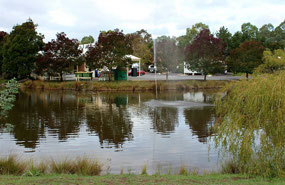
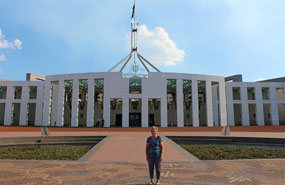
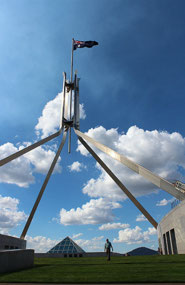
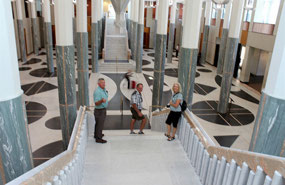
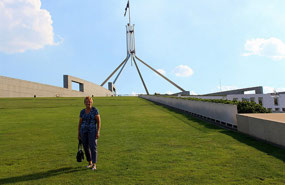
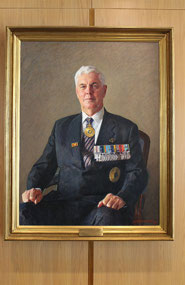
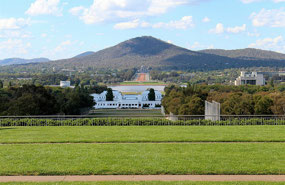

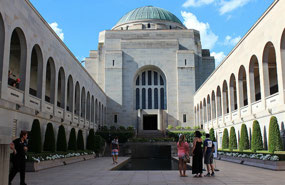
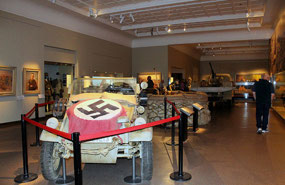
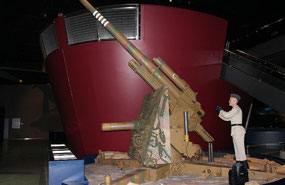
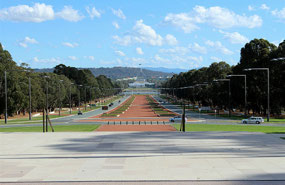

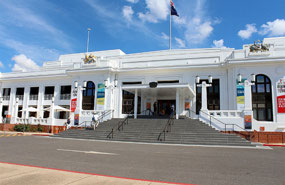
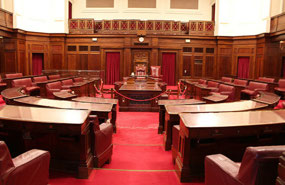
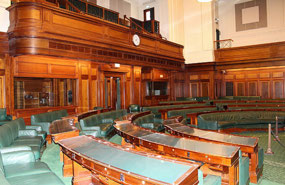
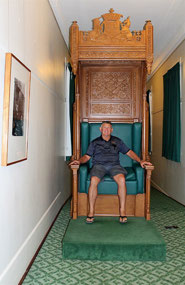
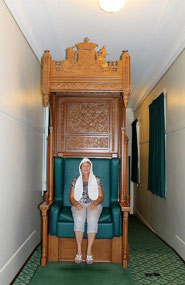
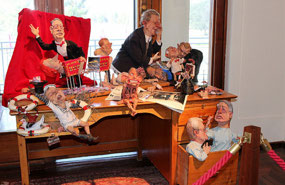


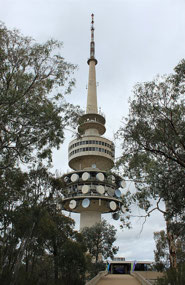
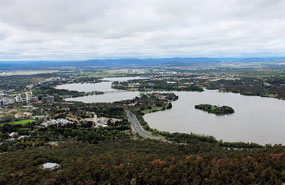
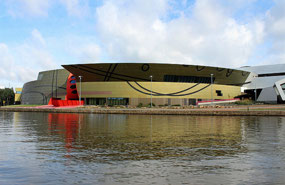
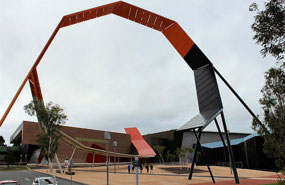
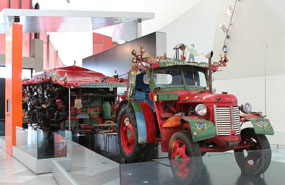
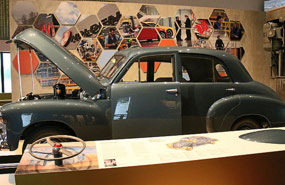
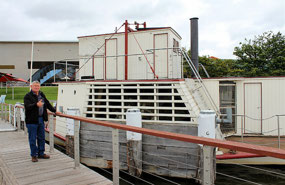
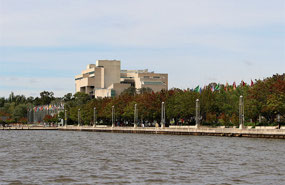
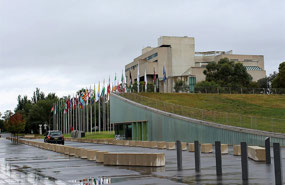

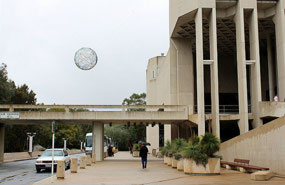

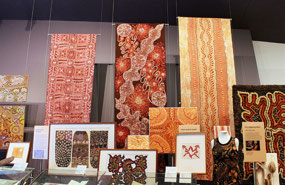
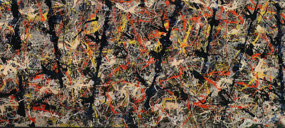
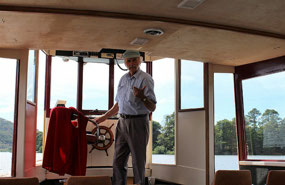
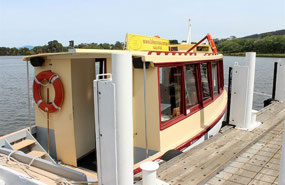
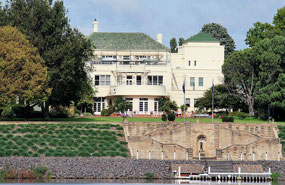
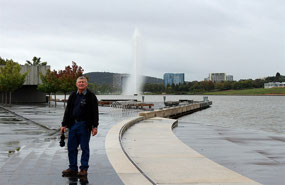

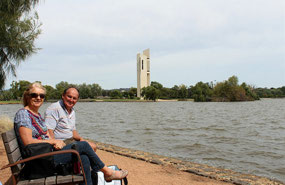
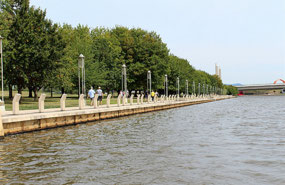
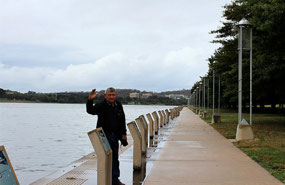
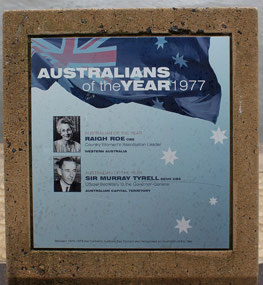
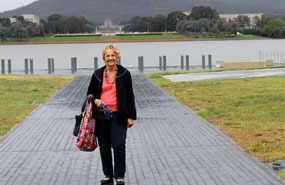
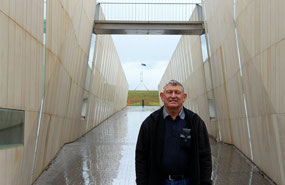
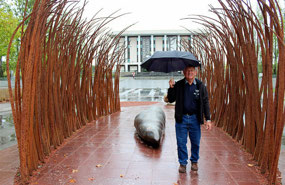
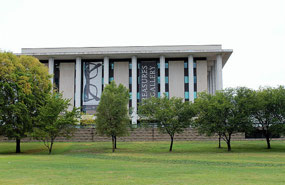
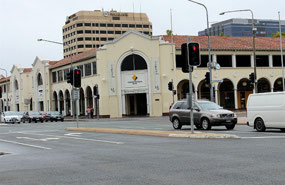
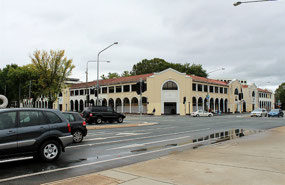
2025-05-22